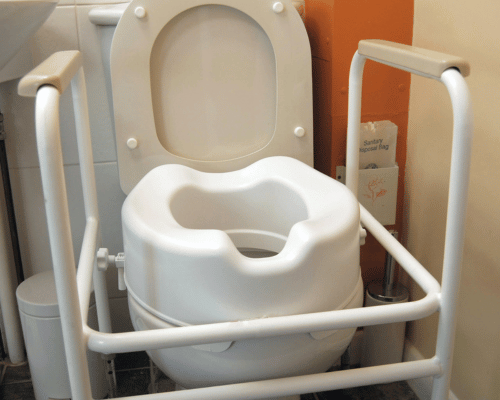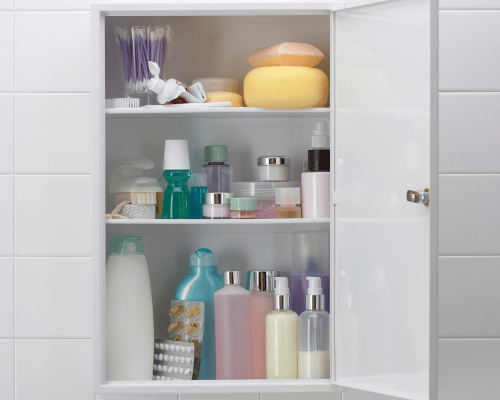As we age, it becomes increasingly crucial to prioritize the safety and well-being of elderly individuals, particularly in areas prone to accidents like the bathroom. The introduction highlights the potential hazards that exist in the bathroom and emphasizes the need for implementing safety measures to mitigate risks and promote a secure living environment.
The bathroom can present numerous challenges for the elderly due to its slippery surfaces, limited mobility, and various obstacles. Accidents and falls in the bathroom can result in serious injuries, affecting the overall health and quality of life for elderly individuals. Therefore, it is essential to take proactive measures to minimize these risks and create a bathroom environment that supports their safety and independence.
Proper lighting is crucial in the bathroom to prevent falls and ensure visibility. Install bright lights or LED bulbs that provide ample illumination. Use motion-activated lights that automatically turn on when someone enters the bathroom. Additionally, place nightlights along the path from the bedroom to the bathroom to assist nighttime navigation.
Slippery bathroom floors are a common cause of accidents. Consider installing non-slip flooring options such as textured tiles or slip-resistant mats. These surfaces provide better traction and reduce the risk of slipping, even when the floor is wet. It is important to regularly clean the bathroom floor to remove any potential hazards like water or soap residue.
Installing grab bars and handrails in strategic locations can significantly enhance bathroom safety for the elderly. These sturdy support structures offer stability and assist with balance while moving around the bathroom. Place grab bars near the toilet, shower, and bathtub. Ensure they are properly anchored to provide reliable support and can bear the weight of the individual.

Low toilets can make it difficult for elderly individuals to sit down and stand up comfortably. Consider installing raised toilet seats to provide a more suitable height. These seats reduce the strain on the knees and make it easier for individuals with limited mobility to use the toilet. Ensure that the raised seats are securely attached and stable.
Traditional bathtubs can pose a significant risk for slips and falls. Replace them with walk-in showers that have a low threshold or no threshold at all. These showers provide easy access and minimize the chances of tripping. Install slip-resistant flooring inside the shower and a sturdy bench or seat for added convenience and stability.
For those with mobility challenges, shower chairs and stools can be invaluable additions to the bathroom. These assistive devices provide a safe and comfortable place to sit while bathing. Look for chairs or stools with non-slip feet and adjustable height features. They should be sturdy and capable of supporting the individual's weight.
Elderly individuals may have difficulty sensing hot or cold water temperatures accurately. To prevent scalding accidents, install anti-scald devices or thermostatic mixing valves in the bathroom. These controls regulate the water temperature and prevent sudden changes that could lead to burns. Educate the elderly on how to use the controls and check the water temperature before use.
Ensure that the bathroom is easily accessible for individuals with mobility aids such as walkers or wheelchairs. Remove any obstacles or clutter that may hinder movement. Widening doorways, installing handrails along the walls, and using lever-style door handles can facilitate easier access. Consider installing a roll-under sink to allow individuals in wheelchairs to comfortably use the basin.

Many elderly individuals take multiple medications, and it is essential to store them safely in the bathroom. Keep medications in a locked cabinet or drawer to prevent accidental ingestion or misuse. Organize them in labeled containers for easy identification. Discard expired medications promptly and consult a healthcare professional regarding any concerns or questions.
Slip-resistant bath mats are an effective safety measure to prevent slips and falls in the bathroom. Place these mats strategically on the bathroom floor, particularly in areas prone to getting wet, such as in front of the bathtub, shower, and sink. The textured surface of these mats provides enhanced traction, reducing the risk of slipping, even on wet surfaces.
When selecting slip-resistant bath mats, choose ones that have a strong grip and adhere firmly to the floor. Make sure they are easy to clean and maintain to prevent the accumulation of water or soap residue. Regularly inspect and replace the mats if they show signs of wear or lose their slip-resistant properties.

1. How often should grab bars be checked for stability?
It is recommended to check the stability of grab bars at least once every six months. Make sure they are securely fastened and can bear the weight.
2. Can non-slip mats be used in the shower instead of installing a walk-in shower?
Non-slip mats can provide some level of safety, but they are not as effective as walk-in showers with slip-resistant flooring. Walk-in showers offer better accessibility and reduce the risk of tripping.
3. Are there any alternatives to raised toilet seats?
Yes, alternatives to raised toilet seats include toilet seat risers and toilet safety frames. These options can provide a suitable height and support for individuals with mobility challenges.
4. How can I make the bathroom more accessible for visually impaired individuals?
For visually impaired individuals, consider using contrasting colors for walls, fixtures, and bathroom accessories. Install tactile markers on controls and labels, and ensure proper lighting throughout the bathroom.
5. What should I do if I notice a water leak in the bathroom?
If you notice a water leak in the bathroom, it is essential to address it promptly. Fix the leak or contact a plumber to prevent water damage and potential hazards.
In conclusion, implementing safety measures in the bathroom is crucial to ensure the well-being of elderly individuals. By following the top 10 recommendations provided in this article, you can create a safer environment that promotes independence and reduces the risk of accidents. Remember to assess the specific needs of the individual and make necessary adjustments to enhance their bathroom safety.

Looking into caregiving services may be overwhelming, but with BrightStar Care South Orange County we ensure to make the process so much easier for you. We are confident that our team of professionals will assist you in looking for the right caregiver to take care of your loved one by keeping you in the loop and more. Contact us today to learn more about caregiving services! Our office proudly serves Roseville and Sacramento. Our office is located at BrightStar Care of South Orange County 26023 Acero, Mission Viejo, CA 92691, United States. You may also call us at 949-837-7000 We look forward to hearing from you!
The bathroom can present numerous challenges for the elderly due to its slippery surfaces, limited mobility, and various obstacles. Accidents and falls in the bathroom can result in serious injuries, affecting the overall health and quality of life for elderly individuals. Therefore, it is essential to take proactive measures to minimize these risks and create a bathroom environment that supports their safety and independence.
Adequate Lighting
Proper lighting is crucial in the bathroom to prevent falls and ensure visibility. Install bright lights or LED bulbs that provide ample illumination. Use motion-activated lights that automatically turn on when someone enters the bathroom. Additionally, place nightlights along the path from the bedroom to the bathroom to assist nighttime navigation.
Non-Slip Flooring
Slippery bathroom floors are a common cause of accidents. Consider installing non-slip flooring options such as textured tiles or slip-resistant mats. These surfaces provide better traction and reduce the risk of slipping, even when the floor is wet. It is important to regularly clean the bathroom floor to remove any potential hazards like water or soap residue.
Grab Bars and Handrails
Installing grab bars and handrails in strategic locations can significantly enhance bathroom safety for the elderly. These sturdy support structures offer stability and assist with balance while moving around the bathroom. Place grab bars near the toilet, shower, and bathtub. Ensure they are properly anchored to provide reliable support and can bear the weight of the individual.
Raised Toilet Seats
Low toilets can make it difficult for elderly individuals to sit down and stand up comfortably. Consider installing raised toilet seats to provide a more suitable height. These seats reduce the strain on the knees and make it easier for individuals with limited mobility to use the toilet. Ensure that the raised seats are securely attached and stable.
Walk-In Showers
Traditional bathtubs can pose a significant risk for slips and falls. Replace them with walk-in showers that have a low threshold or no threshold at all. These showers provide easy access and minimize the chances of tripping. Install slip-resistant flooring inside the shower and a sturdy bench or seat for added convenience and stability.
Shower Chairs and Stools
For those with mobility challenges, shower chairs and stools can be invaluable additions to the bathroom. These assistive devices provide a safe and comfortable place to sit while bathing. Look for chairs or stools with non-slip feet and adjustable height features. They should be sturdy and capable of supporting the individual's weight.
Water Temperature Controls
Elderly individuals may have difficulty sensing hot or cold water temperatures accurately. To prevent scalding accidents, install anti-scald devices or thermostatic mixing valves in the bathroom. These controls regulate the water temperature and prevent sudden changes that could lead to burns. Educate the elderly on how to use the controls and check the water temperature before use.
Bathroom Accessibility
Ensure that the bathroom is easily accessible for individuals with mobility aids such as walkers or wheelchairs. Remove any obstacles or clutter that may hinder movement. Widening doorways, installing handrails along the walls, and using lever-style door handles can facilitate easier access. Consider installing a roll-under sink to allow individuals in wheelchairs to comfortably use the basin.
Medication Storage
Many elderly individuals take multiple medications, and it is essential to store them safely in the bathroom. Keep medications in a locked cabinet or drawer to prevent accidental ingestion or misuse. Organize them in labeled containers for easy identification. Discard expired medications promptly and consult a healthcare professional regarding any concerns or questions.
Slip-Resistant Bath Mats
Slip-resistant bath mats are an effective safety measure to prevent slips and falls in the bathroom. Place these mats strategically on the bathroom floor, particularly in areas prone to getting wet, such as in front of the bathtub, shower, and sink. The textured surface of these mats provides enhanced traction, reducing the risk of slipping, even on wet surfaces.When selecting slip-resistant bath mats, choose ones that have a strong grip and adhere firmly to the floor. Make sure they are easy to clean and maintain to prevent the accumulation of water or soap residue. Regularly inspect and replace the mats if they show signs of wear or lose their slip-resistant properties.

FAQs
1. How often should grab bars be checked for stability?It is recommended to check the stability of grab bars at least once every six months. Make sure they are securely fastened and can bear the weight.
2. Can non-slip mats be used in the shower instead of installing a walk-in shower?
Non-slip mats can provide some level of safety, but they are not as effective as walk-in showers with slip-resistant flooring. Walk-in showers offer better accessibility and reduce the risk of tripping.
3. Are there any alternatives to raised toilet seats?
Yes, alternatives to raised toilet seats include toilet seat risers and toilet safety frames. These options can provide a suitable height and support for individuals with mobility challenges.
4. How can I make the bathroom more accessible for visually impaired individuals?
For visually impaired individuals, consider using contrasting colors for walls, fixtures, and bathroom accessories. Install tactile markers on controls and labels, and ensure proper lighting throughout the bathroom.
5. What should I do if I notice a water leak in the bathroom?
If you notice a water leak in the bathroom, it is essential to address it promptly. Fix the leak or contact a plumber to prevent water damage and potential hazards.
In conclusion, implementing safety measures in the bathroom is crucial to ensure the well-being of elderly individuals. By following the top 10 recommendations provided in this article, you can create a safer environment that promotes independence and reduces the risk of accidents. Remember to assess the specific needs of the individual and make necessary adjustments to enhance their bathroom safety.


